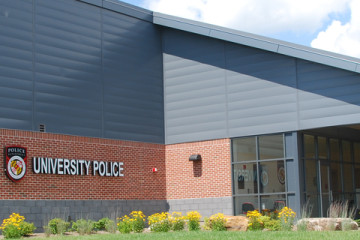Riveting Rosie: National Coming Out Day
For the last 27 years, October 11th has been known as “National Coming Out Day” in America. Nearly three decades ago, on October 11, 1987, there was a National March on Washington for Lesbian and Gay Rights. A year later, National Coming Out Day was born. According to the Human Rights campaign, “we first observed National Coming Out Day as a reminder that one of our most basic tools is the power of coming out.”
In the last year, LGBTQ+ issues have gotten more traction in mainstream media with the Supreme Court’s decision to legalize gay marriage across the nation – and the repercussions to this decision, looking at you, Kim Davis—and the official “coming out” of many celebrities including Caitlyn Jenner. Since last year’s NCOD, more than 800,000 people have come out on Facebook according to a study conducted by the social network.
Celebrity representation is important. When a celebrity comes out as trans*, bisexual, pansexual, asexual, or another “non-traditional” sexuality, it forces the media to recognize that sexual preference isn’t strictly black and white; gay and straight. Sexuality is a spectrum, and it is important for everyone, young and old, to be educated.
Below is a list of many of the different sexualities. While some of these may seem ubiquitous, it can’t hurt to be sure. It is crucial to your own mental health (if you are part of the LGBTQ+ community) and the feelings of LGBTQ+ members in your life to be educated on the meaning of all of the terms on this spectrum. According to the HRC, One out of every two Americans has someone close to them who is gay or lesbian, and one in 10 Americans have a trans* person close to them.
The below list is from Planned Parenthood’s Teen Health Source:
- Asexual– A person who does not experience sexual attraction. Asexual people often still have intimate emotional and intellectual relationships, but they are not looking for a sexual relationship.
- Bisexual- A person who is attracted to men and women (and potentially other gender identities).
- Gay– Usually used to refer to a man who is attracted to other men. This term is sometimes used to describe anyone who identifies as a person who is interested in people of the same gender (e.g. women who are interested in women).
- Genderqueer- A person whose gender identity doesn’t fit the categories of “man” or “woman.” Many different, non-traditional gender identities may fall under the umbrella term “genderqueer.”
- Homosexual– A person who is attracted to or wants to have a relationship with other people of the same gender. Because this word has a history of being associated with a negative medical understanding of sexuality, some people find this term offensive.
- Heterosexual- A person who is attracted to people of the opposite gender. (Another word for this is “straight”.)
Intersex A person whose sex characteristics (hormones, penis, vulva, breasts, hair growth, x/y chromosomes) do not match their assigned sex. In the past, these persons were called hermaphrodites, but this term is now considered offensive. - Lesbian- A woman who is attracted to other women.
- Omnisexual- Another term used to describe pansexual people (see below).
- Pansexual- A person who is attracted to members of any gender. This term recognizes that many people do not fit neatly into a gender category like man/woman, for example, people who are 2 spirited or trans.
- Queer- An umbrella term for sexual identities other than heterosexual.
- Questioning– A person who is unsure of and exploring their sexual identity.
- Transgender- An umbrella term used to describe a range of people who do not conform to their biological sex. Transgender people may or may not opt for surgery or hormones that change their sex or sex characteristics into those of the gender they identify with. (For example, taking hormones to increase the growth of facial hair or getting surgery to remove their Adam’s apple.)
- Transsexual- A person who was assigned a sex a birth that does not correspond to how they define their gender identity. Some transsexual people have surgery or take hormones that change their sex. Others may want to do these things but lack the money or safety to do so.
- Two-Spirited- A First Nations, Métis or Inuit person whose gender is seen to include both male and female aspects or who is non-heterosexual. In some First Nations traditions it is believed that two-spirited people have been spiritually blessed by the creator to house both female and male spirits in their bodies.
This is part of my feminist column, because feminism demands to be inclusive. By advocating strictly for women’s issues and ignoring the arduous obstacles that lie in front of the LGBTQ+ community, we erase our own struggle for rights, freedom, and equality. Embracing your own sexuality (or asexuality) is an important journey, one we must all eventually face. Here at Frostburg, there are many resources available for LGBTQ+ students. One of the foremost is the support group Spectrum that meets every Thursday at 7 in library 237.
If you came out this year, I am proud of you. If you haven’t because you don’t feel confident or safe, I believe in you. Keep on keeping on, and be your wonderful self. Wait until you are ready. Be your own power.



